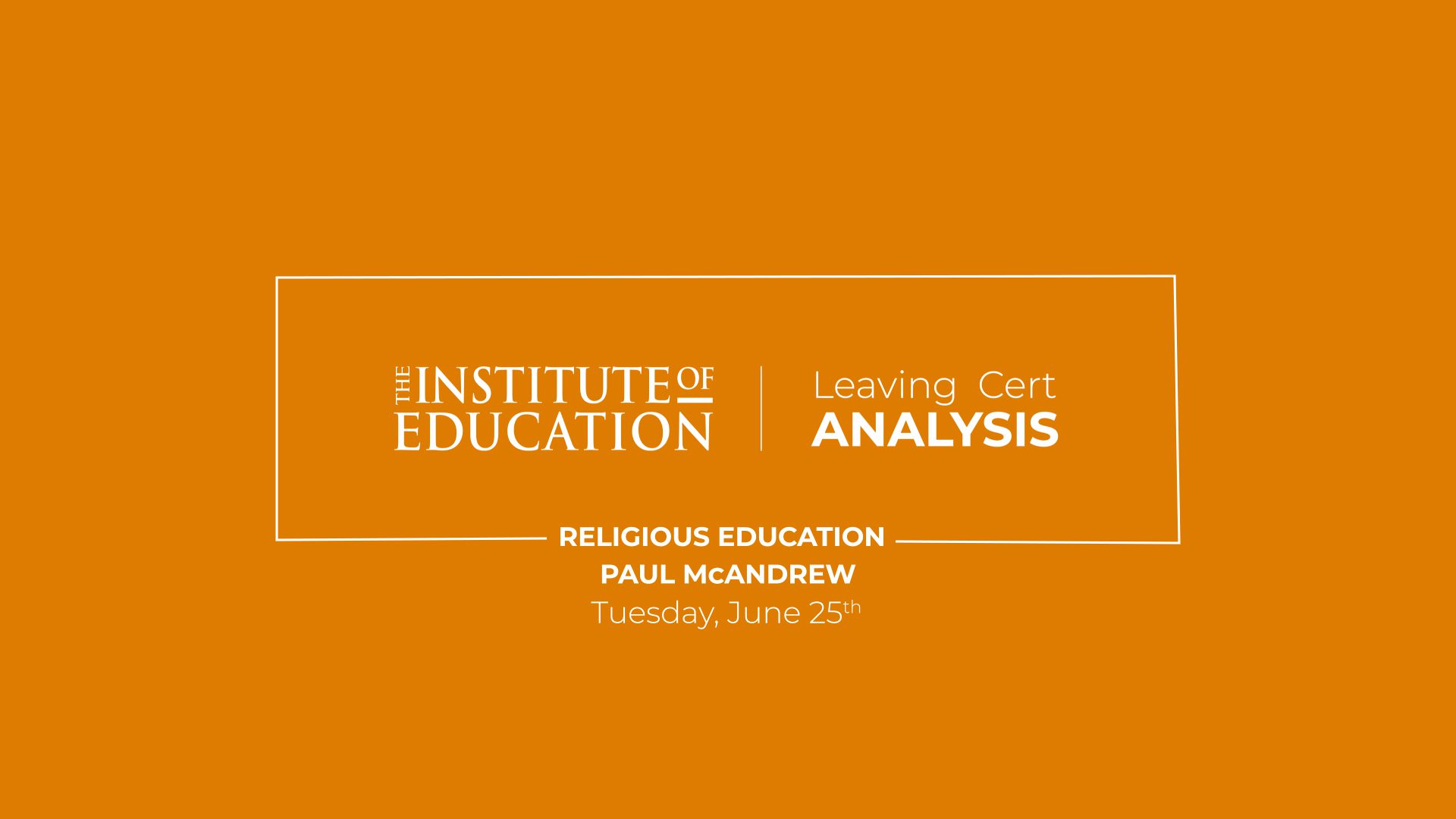Reaction to 2024 Leaving Certificate Religious Education (Higher Level) by Paul McAndrew, Religious Education teacher at The Institute of Education.
- A detail orientated paper that will really compliment students’ knowledge.
- A paper that challenges students to be attentive to the nuances of the questions.
Section A explores the Search for Meaning and Values. Students will be really happy with Question 1 (a) on Socrates. It really dissects every bit of Socrates’ work and impact, covering his philosophical development as well as influence on Plato and Aristotle. There were lots of aspects to explore (e.g. the moral good and essences), so any student who had spent the time going in depth on such a pivotal thinker will be very pleased with how much they could discuss. Q1 (b) on spirituality in ancient societies was not an obvious question but students who really knew the course will have anticipated something along these lines. Q2 (a) asks about “spiritual hunger in our times”, allowing for contemporary reflection and application of concepts. This balances wonderfully with the ancient element of Q1, thus showing how overarching the topics are. Q2 (b) on secular value systems allowed students to explore how ideas of human rights and feminism emerged from their moments in history. Again, a great question which allows students to explore a wide range of ideas.
Section B explores the origins of Christianity with a series of questions that will be very familiar to students. In particular, the question on the Essenes, Pharisees and Sadducees is typical of this section, so students won’t have been phased by it. Section C on World Religions took a wonderfully interconnected approach, asking students to show an in-depth appreciation for the ideas by comparison and contrast. The final part of this question might surprise some students as it focuses on “awe and mystery” which is not directly addressed in the syllabus but is obliquely integrated into several topics, so students needed to draw those elements together. Section D on moral decision-making was a very approachable section as long as you really knew your definitions and examples. “Right relationship” and “law of love” are similar but need to be clearly delineated with good examples to fully grasp this aspect of the question. The other parts on civil law and moral theorists were interesting and straightforward, so students planning this section will feel very happy with it.
The final portion of the paper covers a wide range of topics from sacred texts, the Irish experience of faith, religions relationship to science, and gender and religion. The latter is a popular topic as it has very similar questions every year. This is due to being a comparatively small part of the course, but it contains lots of big ideas that challenge students. The questions were clear with some nice internal choice, so those who prepared could find something that suited them. Section J: Religion and Science opens with a very specific question on Descartes that might put some students off part (a). Part (b) was particularly appealing as it explores similarities and differences between religion and science with regard to either the origins of the universe or genetics. As an 80-mark question, students need to write a lot but should have lots to explore and discuss.
All in all, this was a good paper with a few tricky nuances that might catch some people. But that is typical of the Religion paper, as every year it asks students to really pay attention and adapt.

